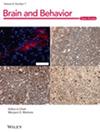The demand for fresh strategies to analyze intricate multidimensional data in neuroscience is increasingly evident. One of the most complex events during our neurodevelopment is adolescence, where our nervous system suffers constant changes, not only in neuroanatomical traits but also in neurophysiological components. One of the most impactful factors we deal with during this time is our environment, especially when encountering external factors such as social behaviors or substance consumption. Binge drinking (BD) has emerged as an extended pattern of alcohol consumption in teenagers, not only affecting their future lifestyle but also changing their neurodevelopment. Recent studies have changed their scope into finding predisposition factors that may lead adolescents into this kind of patterns of consumption.
In this article, using unsupervised machine learning (UML) algorithms, we analyze the relationship between electrophysiological activity of healthy teenagers and the levels of consumption they had 2 years later. We used hierarchical agglomerative UML techniques based on Ward's minimum variance criterion to clusterize relations between power spectrum and functional connectivity and alcohol consumption, based on similarity in their correlations, in frequency bands from theta to gamma.
We found that all frequency bands studied had a pattern of clusterization based on anatomical regions of interest related to neurodevelopment and cognitive and behavioral aspects of addiction, highlighting the dorsolateral and medial prefrontal, the sensorimotor, the medial posterior, and the occipital cortices. All these patterns, of great cohesion and coherence, showed an abnormal electrophysiological activity, representing a dysregulation in the development of core resting-state networks. The clusters found maintained not only plausibility in nature but also robustness, making this a great example of the usage of UML in the analysis of electrophysiological activity—a new perspective into analysis that, while contributing to classical statistics, can clarify new characteristics of the variables of interest.


